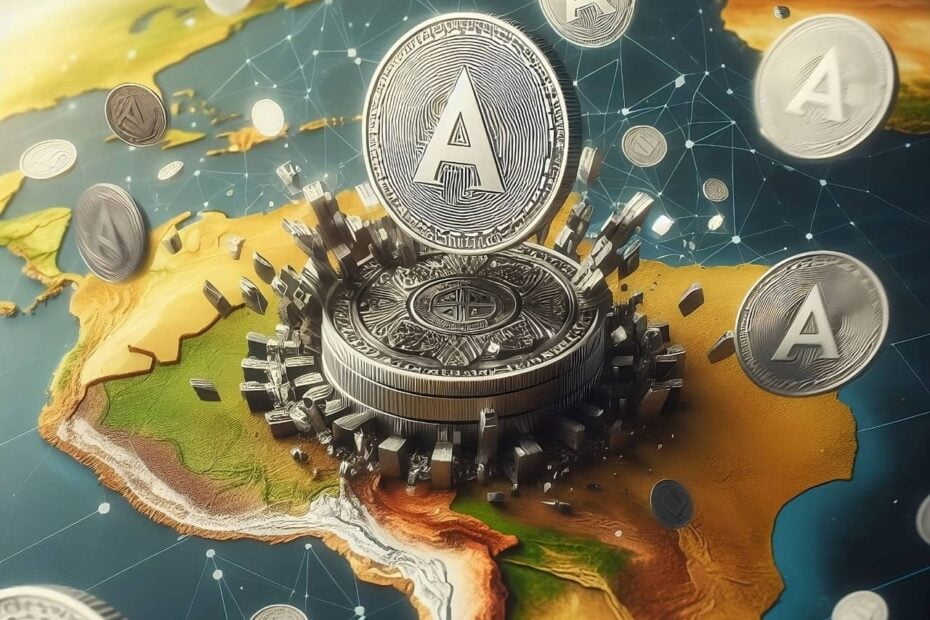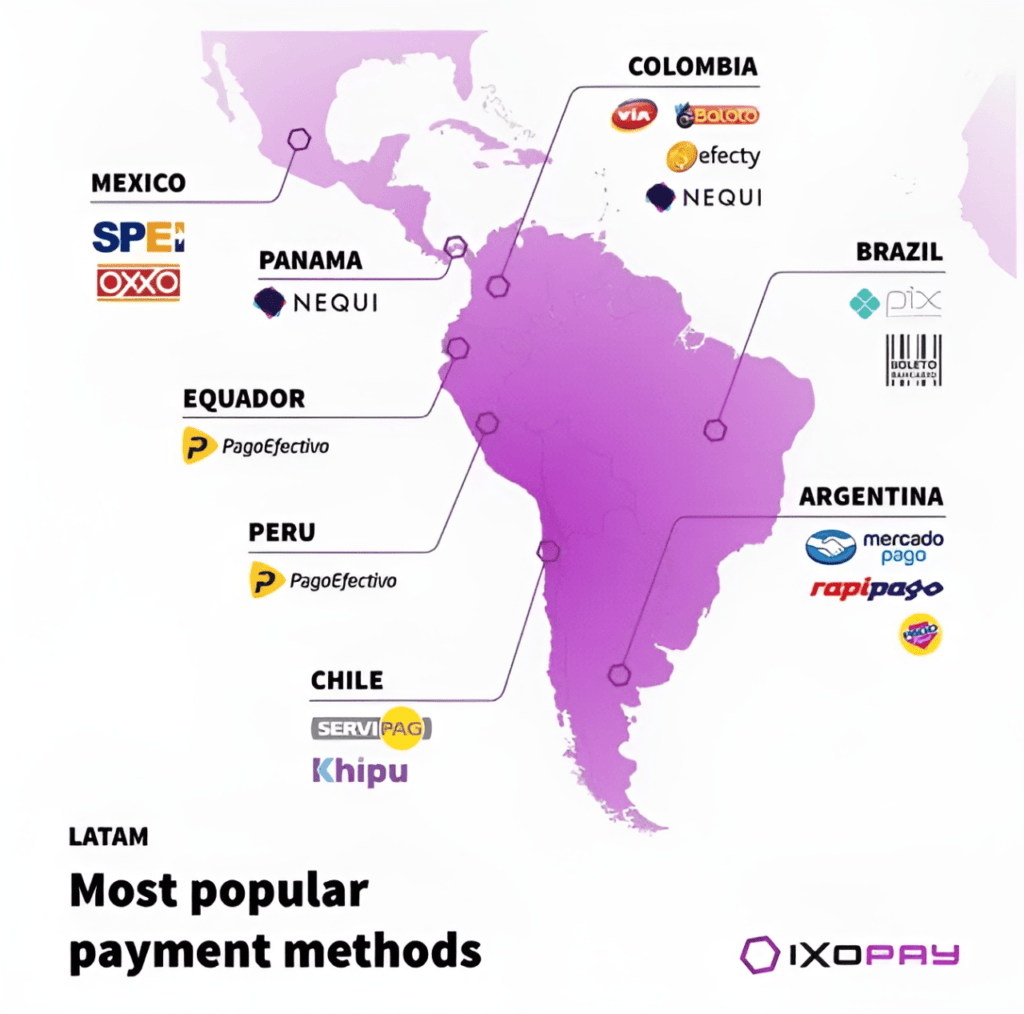
Cardano has, so far, maintained its focus on Africa for many compelling reasons.
However, there are many other markets with enormous potential. Ignoring them would be bad for the global adoption and success that Cardano deserves. The population of Latin America is 665,798,000 people, equivalent to 8.28% of the world’s total. The population percentage over 14 without a bank account is 42.5%. Hundreds of millions can benefit from Lenfi and Liqwid Finance, among others.
The use of credit cards is low in Latin America. Only about 1/5 of the population owns a credit card. Perhaps it can be influenced by the fact that the use of credit cards has become a bit demonized due to a lack of financial education. Very few people have the profile ideas to get a credit card from traditional banks. Despite this, making payments is still a latent need, and different payment methods have been created, such as Nequi (in Colombia). The map below shows some of Latin America’s most popular payment methods. Note that each country uses its methods.

Crypto Environment
This is the perfect environment for cryptocurrency adoption. It is a population already accustomed to electronic payments, which credit card companies ignore, and would benefit from a unified system across the region. Solutions like COTI, Mehen, or others would be perfect. Even with the lack of credit cards, e-commerce is growing. With annual growth rates of 30% projected through 2025. And with few credit cards and very different banking options, crypto is an obvious, but little-known option that offers many benefits.
If we take a look at the migrants coming from Latin America, they represent about 10% of the population, compared to about 2%, on average, worldwide for developing economies. These people send large amounts of money averaging about 6% of GDP to support relatives in their home countries. Currently, the only option is Western Union, which charges high fees and similar services. Don’t you think this is a perfect opportunity to use ADA or stablecoins from COTI or Indigo? Who wouldn’t prefer a 1 ADA fee instead of hundreds of dollars?
What about new developer talent? According to uniRank, there are currently 1,869 official universities in Latin America. These are millions of talented, intelligent, and passionate young people, eager to get ahead and capable of creating Web 3 development, Cardano can’t miss out on these talents because of barriers such as language or the very complexity of blockchain.